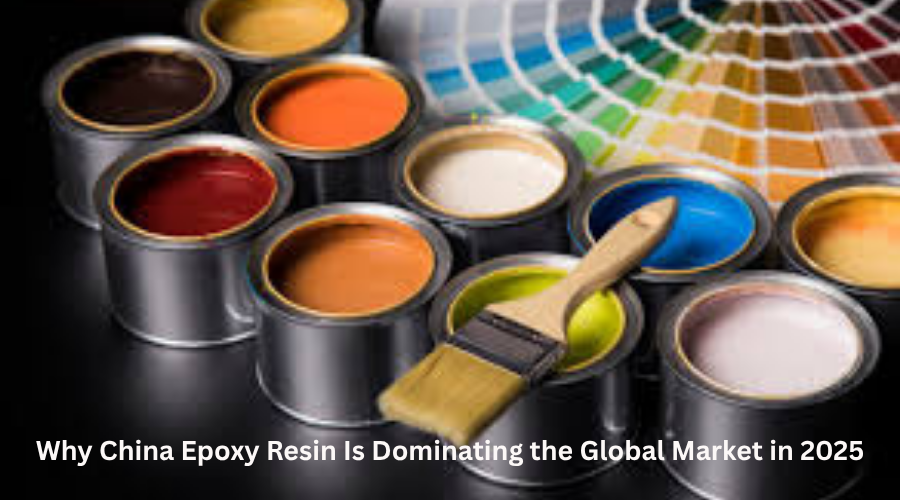How To Source Silicone Potting Compound From Reliable Supplier?
- qinglongdatech
- Apr 23
- 4 min read

When it comes to electronics manufacturing, automotive assembly, or LED encapsulation, the importance of high-quality silicone potting compounds cannot be overstated. These materials offer superior electrical insulation, moisture resistance, and thermal stability—making them essential for protecting delicate components. However, as demand grows, so does the complexity of sourcing. If you're searching for a reliable silicone potting compound supplier, you're not alone. Here's how you can navigate through the effective strategies to find trustworthy partners without compromising on quality or budget.
What is Silicone Potting Compound, and Why is It Important?
Before diving into the sourcing process, let's take a quick look at what silicone potting compounds actually are. These are specialized liquid materials that cure into a rubber-like protective layer. Their primary role? Encapsulation and protection.
Electronics, once potted, become more resistant to:
Moisture
Dust and debris
Vibration
Thermal cycling
Silicone-based materials are especially favored because they maintain flexibility across a wide temperature range, which is perfect for environments that experience frequent heat fluctuations.
The Challenges in Sourcing Silicone Potting Compounds
Finding a good supplier is like trying to find a needle in a haystack. There are hundreds of vendors online, each claiming to offer the "Premium quality at an affordable cost." But not all that glitters is gold. Here are the common pitfalls:
Inconsistent quality across batches
Long lead times
Lack of technical documentation
Poor customer service
Hidden charges or fees
So, how do you ensure you're working with a reputable supplier? Let's dig into the steps.

Step-by-Step Guide to Source Silicone Potting Compounds Effectively
1. Define Your Requirements Clearly
Start with clarity. Define exactly what you need:
Thermal conductivity level
Curing time (room temperature or heat cure?)
Viscosity
Color
Dielectric strength
Volume needed (bulk or small-scale?)
Having precise requirements helps you communicate your needs clearly and also makes it easier for suppliers to provide accurate quotations.
2. Prioritize Certifications and Compliance
Always ask for certifications. Reliable suppliers typically meet international standards such as:
ISO 9001 for quality management
RoHS compliance (Restriction of Hazardous Substances)
REACH compliance (Registration, Evaluation, Authorization, and Restriction of Chemicals)
If a supplier can't provide proper documentation, consider that a red flag.
3. Vet the Supplier's Reputation
Reputation is everything. Here's how to check it:
Read reviews on independent platforms like Alibaba, Made-in-China, or Global Sources.
Check the supplier's online presence. Do they have a professional website? Are their technical documents downloadable?
Ask for customer references—and actually follow up.
Review case studies to see if they've worked with clients in your industry.
4. Ask For Samples
Never skip this step.
A good supplier will be more than willing to provide sample materials so you can test:
Cure time
Hardness
Adhesion
Electrical properties
If the supplier resists sending a sample, take that as a warning sign.
5. Evaluate Their Technical Support
Beyond product delivery, can the supplier offer technical assistance?
Do they help troubleshoot issues?
Can they recommend the right compound for your specific application?
Do they offer customization options?
A great supplier will be more than just a vendor—they'll be a technical partner.
6. Consider Logistics and Delivery Capabilities
Let's be honest—delays in delivery can cost your business money. Ask these questions:
What are their average lead times?
Do they have a local warehouse or distributor network?
Can they handle urgent orders?
What shipping methods do they use?
This is especially important if you're ordering in bulk or planning for long-term supply contracts.
7. Don't Be Fooled by Just Low Prices
While cost is an important factor, don't make it the only one.
A suspiciously cheap quote might mean:
Inferior ingredients
Cut corners in production
Lack of quality control
In the long run, poor-quality materials can lead to product recalls, customer dissatisfaction, and extra costs in repairs or replacements.
8. Compare Multiple Suppliers
Never go with the first option. Shortlist at least 3-5 vendors and compare them on:
Quality
Certifications
Technical support
Price
Delivery time
Reviews
Create a simple scorecard if needed. It makes the decision process much more objective.
9. Negotiate Terms and Start Small
Once you're satisfied, start with a small order to test the waters. Use this first transaction to evaluate:
Responsiveness
Packaging quality
Delivery accuracy
Post-sale support
If all goes well, you can gradually scale up the order volume or lock in a long-term contract.
10. Build a Long-Term Relationship
If you've found a reliable supplier, don't treat them like a one-time vendor.
Provide feedback
Share your future needs
Offer testimonials if they perform well
This encourages better service, possible discounts, and priority during supply chain disruptions.
Conclusion
Sourcing silicone potting compounds is not just a procurement task—it's a strategic business move. The right supplier can make a notable distinction in the quality and reliability of your products. By defining your needs, verifying credentials, testing samples, and building long-term relationships, you can avoid common pitfalls and ensure smooth operations for years to come.
Don't rush the process. A little diligence up front can save you countless headaches down the road.
FAQs
Q1. What industries use silicone potting compounds the most?
Industries like automotive, electronics, LED lighting, renewable energy, and aerospace frequently use silicone potting compounds for their excellent insulating and protective properties.
Q2. How long do silicone potting compounds last?
When properly applied, these compounds can last for 10+ years, depending on the environmental conditions and the type of compound used.
Q3. Can I customize the formulation based on my project?
Yes. Many reputable suppliers offer custom formulations tailored to your exact application—whether you need fast curing, specific thermal resistance, or particular colors.
Q4. Is there a difference between potting and encapsulation?
Yes. While both involve protecting electronic components, potting completely fills the enclosure with the compound, whereas encapsulation may only coat or partially cover the components.
Q5. Are there eco-friendly options available?
Some suppliers now offer low-VOC or eco-conscious silicone potting compounds that meet environmental standards without compromising performance.







Comments